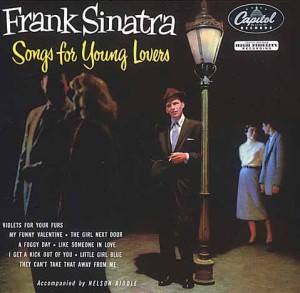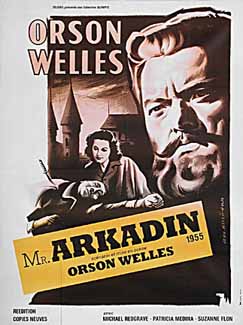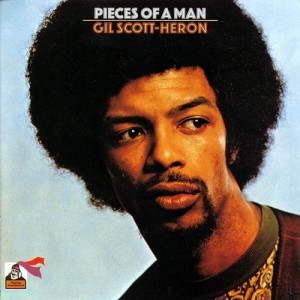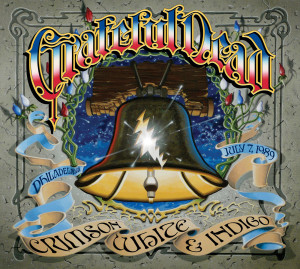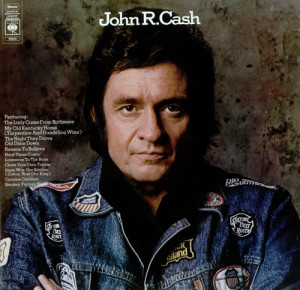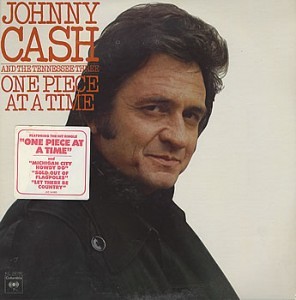Link to an article by Christopher Brauchli:
Month: August 2015
Frank Sinatra – Songs for Young Lovers
Frank Sinatra – Songs for Young Lovers Capitol H-488 (1954)
Sinatra was the perfect representative for the American WWII generation. In the 1940s, he had a somewhat frail and scrappy voice, capable of sounding very vulnerable and unsure. He sang many maudlin pop songs. By the 1950s, that all changed. His voice was more confident and debonair, with a cocky sense of swing. He recorded more music with jazzy arrangements. Songs for Young Lovers is Sinatra accomplishing his aims flawlessly. All of these songs are great. The album as a whole conveys a sense of contentment, a “top-of-the-world” feeling that is unshakable. Of course, in the aftermath of WWII, American geopolitical power peaked in the early 1950s (1951 to be exact), and the country was well into a period of unparalleled prosperity that would stretch out until the early 1970s, when Europe had rebuilt and the Third World started to fight against and (partly) overcome legacies of imperialism.
Nelson Riddle provides the arrangements and conducts. Although there are horns, strings and a jazz combo rhythm section, the accompaniment conveys a large and full sound with relatively few performers. It helps that almost every song has slightly different instrumentation, from electric guitar, to harp, to saxophone, to violins, piano…it is all here. The jazz treatments aren’t innovative. They take the best of what the genre had achieved over the last decade and distils it to a highly potent elixir. Sinatra, for his part, is just perfectly matched to the music. While the vocals and accompaniment do complement each other, Sinatra always finds ways to capture a listener’s attention with a whole range of techniques from brash vocal gymnastics to subtly nuanced shadings, while maintaining an impeccable sense of balance. He can change up his approach in an instant. In lesser hands this would come across as arrogant posturing. For Sinatra, though, it just seems like part of a world of limitless possibilities.
The legendary jazz trumpeter and bandleader Miles Davis credited Sinatra’s singing (and Orson Welles‘ speaking voice) as being a big influence on his own playing. Davis was onto something. Sinatra, at least on an album like Songs for Young Lovers, absolutely commands attention. This is a master class on how to be a star soloist. For every riff the band offers Sinatra has one more move to offer. The band leads, in a sense, yet Sinatra operates by his own rules and always pushes things further. Each step comes across as effortless. The effect is that his voice is unstoppable without ever being forceful, angry or merely loud. Maybe he had no basis for this confidence, or was overestimating his own personal independence (never acknowledging the structural social factors that made it possible for Sinatra to sing this way, unlike, say, the European songstress Lotte Lenya on her Lotte Lenya singt Kurt Weill of the following year that relied upon a fractured, scrappy elegance), but Sinatra never once flinches and he can convince just about anyone that this is the best pop music around. Take “The Girl Next Door,” with a part near the end in which a single violin plays a tremolo, like what accompanies silent movies in a sentimental scene with one character longing for another, supported by a gentle run on a harp, in which Sinatra comes in and calmly holds some notes to melt away the sentimentality. He follows that song with a solid, sturdy yet smooth delivery of “Foggy Day.”
For clear-eyed delivery, Sinatra was never better. No doubt, one of his best.
Mr. Arkadin [AKA Confidential Report]
Mr. Arkadin [AKA Confidential Report] (2013)
Filmorsa/Cervantes Films/Sevilla
Director: Orson Welles
Main Cast: Orson Welles, Robert Arden, Paola Mori, Patricia Medina
There are few movies that so clearly explain Jacques Lacan‘s concept of the “barred subject” ($) in psychoanalysis like Orson Welles’ Mr. Arkadin. The concept is that the subject, the essence of the consciousness of a human being, is a void or lack, and people are driven to try to fill that void to be perceived by others in a certain way. This is almost a summary of Welles’ film! Arkadin (Welles) is a wealthy and secretive financier. Guy Van Stratten (Arden) is con man of sorts who tries to get close to Arkadin, then winds up working for him to investigate the man’s allegedly forgotten past. As the film concludes, Van Stratten discovers that Arkadin always knew his about his past, when he was a member of a crime syndicate, but saw himself as just an empty vessel to create the Arkadin persona to be seen as powerful in the eyes of his daughter Raina (Paola Mori).
In his entire career, Welles only had complete creative control on two films. This was not one of them. As such there are a lot of different edits circulating. Criterion Collection has issued what they call a comprehensive edition. They seem to have put together the best and most coherent version I’ve seen.
This film was not regarded very highly at the time, except by the French. That makes sense. After all, Lacan was French. Some superficial readings focus on the simple plot twist whereby Arkadin uses Van Stratten to locate his past criminal associates to eliminate them one by one. But the film opens and closes with an plane flying empty, that once contained Arkadin. He disappears when he daughter discovers his personal history, and the foundational crime that established his persona as a powerful financier. His power and authority is premised on his past being concealed. More importantly, though, Arkadin is revealed as nothing, the barred subject, like all of us.
Green Day – ¡Uno!
Green Day – ¡Uno! Reprise 531973-2 (2012)
This is an unexpectedly good album. Sure, it’s Green Day, so don’t come for poetic lyrics, but do look for lots of derivative songwriting. “Carpe Diem” borrows heavily from David Bowie & Queen‘s “Under Pressure,” and aside from the usual Clash influences (“Kill the DJ” is like Sandinista!-era Clash or Destiny Street-era Voidoids) there are influences from The Platters to The Guess Who. Yet, it delivers one catchy, melodic pop punk song after the next. Superficial teen angst is what these guys know and do best. I’ll take this over American Idiot any day.
Gil Scott-Heron – Pieces of a Man
Gil Scott-Heron – Pieces of a Man Flying Dutchman FD-10143 (1971)
Fortunately Gil Scott-Heron never held back the power of his words. He was not afraid to knock you down right off with a left hook. His initial blow leaves you a bit vulnerable to his messages for which you would otherwise guard against. But these are defensive tactics meant to assuage the theft of his humanity. He brings you in to a place rough seas have yet to engulf.
Gil Scott-Heron talks about redemption but not in simple assumptions. He deeply reasons it through, complete with all the unpleasant but unavoidable consequences. Drug abuse told through the eyes of an addict, revolution as hard work.
This album was the beginning of a long collaboration with Brian Jackson. The great Ron Carter also appears on bass, proving that great musicians can make great pop music or anything else they want. Together with producer Bob Thiele, these musicians reject perfectionism. This disc sounds like it came from the early 1970s, with a funky, jazzy backing an sing-speak raps over the top. It is worth the effort to hear this as more than a novelty from time capsule. Gil had a wit that was sharp, incisive and generous. He rarely gets his due as one of the great poets of rock and roll. This semi-autobiographical masterwork — it doesn’t have to be flawless to be that — isn’t the whole story. Pieces of a Man is Gil Scott-Heron’s gathering of the remains of what could have been.
Grateful Dead – Crimson, White & Indigo
Grateful Dead – Crimson, White & Indigo: July 7 1989, JFK Stadium, Philadelphia Rhino GRA2-6015 (2010)
The 1980s were not kind to the Dead. It was a time of one terrible album after another. This live set recorded in 1989 does something to improve the era’s reputation. First off, we get piano instead of synthesizer, and it it makes all the difference. Plus, selections from the 80s albums sound better than the studio counterparts generally. And although Bob Weir had long ago given up trying to sing well, he’s less annoying here than usual. This probably won’t win over a lot of new deadheads, but it’s a surprisingly decent offering for the era.
Christos Tsiolkas – Greek Tragedy
Link to an article by Christos Tsiolkas:
“Greek Tragedy: Former Finance Minister Yanis Varoufakis on Greece’s Economic Crisis”
Bonus links: “The Defeat of Europe” (“Whatever one thinks of our government, this episode will go down in European history as the moment when official Europe, using institutions and methods that no treaty legitimised (the Eurogroup, the Euro Summit, the threat of eviction from the eurozone), dealt a major blow to the ideal of an ever-closer democratic union. Greece capitulated, but it is Europe that was defeated.”) and “Europe’s Big Banks are Fueling the Continent’s Far-Right Fascists”
Johnny Cash – John R. Cash
Johnny Cash – John R. Cash Columbia KC-33370 (1975)
When Johnny Cash’s popularity sagged in the mid-1970s, his label Columbia stepped in to guide the recording process. Someone from the label picked out some popular songs, ran them by Cash to see which ones he would record, then went out and recorded all the instrumentals and simply had Cash sing over the top of the finished package. It was a very conscious effort to make Cash seem “relevant”, from the picture on the album cover of Cash with longer hair and a denim jacket to a warm, muted sound that fairly drips with the ambiance of huge American-made cars, faux-leather chairs, shag carpeting, dim yellow lighting, and other accoutrements of a time when the glory days of the American working man were starting to crumble. Cash practically disowned this album as a sell-out on his part. Yet, dated or not, this is a fair and listenable effort. It helps that there are lots of good songs, and the mellowness makes it a decent period piece. This may not be representative of anything else in Cash’s large catalog, but it isn’t nearly as bad as some would have it.
Johnny Cash – Look at Them Beans
Johnny Cash – Look at Them Beans Columbia KC 33814 (1975)
A ho-hum affair. There aren’t any real duds, but nothing to particularly impress either. The best is probably the rollicking “I Hardly Ever Sing Beer Drinking Songs,” which comes across something like a warm-up for his minor comeback novelty hit “One Piece at a Time” of the following year. By 1975, Cash was fairly consistently recording in a more contemporary style rather than the folky and frequently acoustic style established with Hello, I’m Johnny Cash. This new sound often had a kind of Texas barrelhouse or Bakersfield Sound flavor that seemed like a reaction to the Outlaw Country movement and the likes of Jerry Reed. Elsewhere string arrangements are common. A few tracks have a horn section, which seems to neither add a lot nor take anything away, it just sort of changes things up in a Herb Alpert & The Tijuana Brass sort of way. This is not the Cash album anyone is likely to reach for first, though fans will probably enjoy it well enough once its playing. He would go on to make quite a few more albums similar to this in varying degrees.
Johnny Cash – One Piece at a Time
Johnny Cash and The Tennessee Three – One Piece at a Time Columbia KC 34193 (1976)
After a few years without any significant chart success, Cash had a mild comeback with One Piece at a Time and its title track single. The album features a mixture of ballads and bouncy, novelty-inflected, up-tempo numbers. Easily the best thing here is the title track, a rollicking tale of an auto worker pilfering parts to assemble his dream automobile, only to have things go comically awry. It’s the best known Cash single of the 1970s, and for good reason. The piano riff was lifted from somewhere else, though the source eludes me at the moment. Overall, this one is decent if a little bland. Sort of a top of the third tier Cash album.

